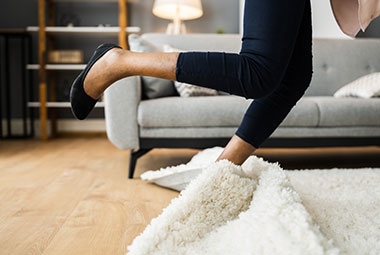
Recovering from a hip or knee replacement brings new mobility, but it also comes with a period of increased vulnerability. A single fall during recovery can cause complications that set back your progress and may even damage your new joint. This is why fall prevention should be a top priority during the weeks and months following surgery.
The Unique Risks After Joint Replacement
Falls can happen to anyone, but after joint replacement surgery, the stakes are higher. Your body is still healing, muscles are regaining strength, and balance may be affected due to post-operative changes. Additionally, swelling, pain, and reduced flexibility can make it harder to react quickly and prevent a stumble from becoming a serious fall.
A fall during this period can lead to:
- Dislocation of the new joint
- Fractures around the implant
- Loosening of the prosthesis
- Extended recovery time or the need for revision surgery
Why Balance and Strength Matter
Strong muscles and good balance are your best defense against falls. After joint replacement, your physical therapy program is designed not only to restore movement but also to rebuild stability. Targeted exercises for the legs, core, and hips improve coordination, while practicing safe walking patterns helps reduce the risk of losing balance.
Even daily activities, like getting out of a chair, walking on uneven ground, or climbing stairs, become safer when your body is supported by strong, well-trained muscles.
Creating a Safe Home Environment
Your home environment can make a big difference in fall prevention. Small adjustments can significantly lower your risk:
- Remove loose rugs and clutter from walkways
- Install grab bars in the bathroom and staircase railing
- Ensure adequate lighting in hallways and staircases
- Keep frequently used items within easy reach to avoid climbing to reach high cabinets
- Use nonslip mats in the bathroom area
- Use a firm chair with armrests for standing support
- Avoid pets getting underfoot. Keep pets and their toys or bedding out of walking paths or hallways
- Wear supportive shoes and avoid flip flops or slippers without backs, and slippery socks
If you use assistive devices such as a cane or walker, make sure they are properly adjusted to your height and that you’re comfortable using them before moving independently.
The Role of Regular Follow-Up
Follow-up appointments with your orthopedic surgeon are essential for monitoring your recovery. These visits ensure that your joint is healing properly and give you a chance to discuss any issues with stability, pain, or movement. If needed, physical therapy or balance training may be recommended to further reduce fall risk.
Prioritize Safety for Long-Term Success
A successful hip and knee joint replacement isn’t just about the surgery; it’s also about protecting your investment in mobility and quality of life. By committing to strength and balance-building exercises, creating a safe environment, and staying consistent with medical follow-ups, you can greatly reduce your risk of setbacks.
If you’ve had a knee or hip joint replacement or are planning one, prioritize fall prevention as part of your recovery strategy to get the best outcomes possible.
AUTHOR: Robert J. Avino M.D. is a board-certified and fellowship-trained adult hip and knee reconstruction surgeon at Palm Beach Orthopaedic Institute. Dr. Avino specializes in robotic-assisted hip and knee replacement using the minimally invasive direct anterior approach to hip replacement, across Palm Beach County in South Florida.










